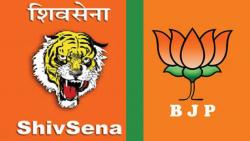From Bimal Roy to Sanjay Leela Bhansali, and most recently Sudhir Mishra — over the years filmmakers have been inspired by Sarat Chandra Chattopadhyay’s novel. But what do they find so alluring about the character, Devdas? Why does everyone want to give this classic tragic love story their own spin?
Mishra answers, “Devdas is a character who doesn’t only destroy himself, but also the ones who love him. That makes him an interesting character for filmmakers. But when I started working with this story, I thought it’s not enough, so I changed it. That’s why my film is titled Daas Dev.”
He talks about how he saw similarities between the character of Devdas and the Shakespearean tragic hero Hamlet and decided to give his plot a political twist. While the original Devdas becomes an alcoholic, Mishra’s Dev, played by Rahul Bhatt, is addicted to power. “What is the biggest addiction today? Power — the lust for it. My film traces how Dev is a slave to his addiction, and how he rids himself of it. In this situation, where one is addicted to power, love is not possible,” says Mishra.
But though there is a Paro and a Chandramukhi in his film too, they are very different from the original characters. “Paro does not stay behind iron gates, she comes out and confronts Dev, and stands up against him. I thought who could play this spunky, rooted, desi but modern girl? Richa (Chadha)! Chandramukhi is a fixer, a manipulator and a seductress of sorts who is in love with Dev.
Though she manipulates him, she fights to liberate him. She walks away from Dev with something for herself as well, because she is a modern young woman. Who could play someone who looked like she’s fragile and can break, but is actually tough, who can be in love but still be in control of things? Aditi (Aditi Rao Hydari). Dev, Paro and Chandramukhi are all slaves to their addictions in the beginning, but manage to liberate themselves in the end. Also, the two women are as important as Dev,” says Mishra.
In addition to the main characters, the film has important cameos by Vineet Kumar Singh and Anurag Kashyap as well.
There are many layers to this story. And just like the novel, Mishra’s film also touches upon the class divide within the Indian society. “The film talks in different ways about the time in which we live. It’s a political film in the guise of a romantic film. It shows how this lust for power intrudes and overpowers every decent feeling,” says Mishra.
The film also shows how the attitude of women has changed, and what the modern woman is really about. “The concept of love has changed. Love seemed to be dependent on the woman always being faithful, the man wandering around and the woman in turn pining for him. But nowadays, even if they love the man, they will stand up against him, confront him and may even walk away if they have to. We cannot ignore the fact that things have changed, as they should. The women, who are at the centre of all the action, will not be pining for Dev, they will do what they deem fair, and have every right to do so,” he says.









